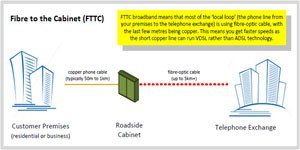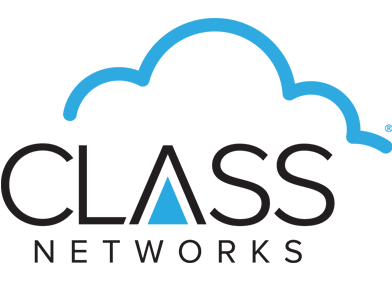
A Network for the 21st Century
Superfast Broadband or FTTC (Fibre-To-The-Cabinet) is the latest version of broadband that is available to both consumers and businesses. Over the last few years billions of pounds have been invested across the country in replacing the network of copper cables that inter-connect local telephone exchanges with fibre-optic cables. BT has named this project 21st Century Network or 21CN.
The next phase has been to replace the copper cables connecting the local exchange to the green cabinets on the side of your road – fibre-to-the-cabinet. The copper cable connecting your house or office to the green street cabinet will remain in most instances but new builds and larger office blocks are likely be connected by fibre, which is known as FTTP or fibre-to-the-premise.
Technology
To-date broadband connections have used a technology called ADSL (Asymmetric Digital Subscriber Line) to connect computer(s) to the internet. In a simple set-up, ADSL shares the analogue telephone line with traditional voice calls; a splitter is used to combine the cables from the router and the telephone into a single connection at the BT socket. ADSL is asymmetric meaning that it can transmit more data from the internet (download or downstream) than it can transfer to the internet (upload or upstream).
In an FTTC set-up the broadband and voice still share the telephone line but due to the relatively short length of the copper cable the internet can be accessed at higher speeds than ADSL, using a different technology is used called VDSL. VDSL stands for very high bit-rate digital subscriber line and as it’s a different technology the ADSL router needs to be replaced with a VDSL router.
From the cabinet information is transmitted digitally through switching a laser on and off at such high speeds that a single optical fibre (slightly thicker than a human hair) can carry thousands of telephone calls and internet sessions simultaneously. Fibre optic cables operate at higher bandwidths over longer distances than copper cables as the information carrier is light rather than electricity. Fibre optic cables offer less resistance to light than copper cables offer to electricity
- More reliable due to fibre optics being less susceptible to electrical interference
- Has a bigger bandwidth than copper cables therefore can carry more voice and data traffic
- Faster due to faster laser switching technology and less resistance
- The cables themselves are lighter and smaller than their metal predecessor
Broadband Versions
There are currently three basic versions of ADSL, known as ADSL Max, ADSL 2+ and ADSL AnnexM. The table below shows their related upload and download speeds.
| ADSL line | Max Upload Speed | Max Download Speed |
| ADSL Max | 800KB | 8MB |
| ADSL 2+ | 1.3MB | 24MB |
| ADSL AnnexM | 2.5MB | 24MB |
1) Broadband Basic – ADSL 2+ (1.3MB up 8MB down)
2) Broadband Plus – ADSL2+ (1.3MB up 24MB down)
3) Broadband Premium – Annex M (2.5MB up 24MB down)
4) Broadband Max – IP Stream (448kbps up 8MB down)
5) Broadband Max Premium – IP Stream (832Kbps up 8MB down)
Superfast Broadband
40 MB download & 10MB upload
80MB download & 20MB upload
Advantages of FTTC
These advantages mean that you will have a better use of technologies such as:
- Cloud computing due to faster upload and download speeds
- Hosted Telephony systems as your broadband will be able to carry more data due to the bigger bandwidth (this can also provide a cheaper telephony system for you company than traditional system)
- VPN networks and flexible working become easier to access due to faster speeds
- Multiple applications to the line without sacrificing speed
- General faster internet browsing speeds so that you and others can find information much faster.
Superfast Broadband Availability
You can check the availability of FTTC here.
You can find Class’s current Superfast Broadband pricing and deals by speaking to us directly.
Contact us
Please call Class Networks: 0333 800 8811
Posted in News
